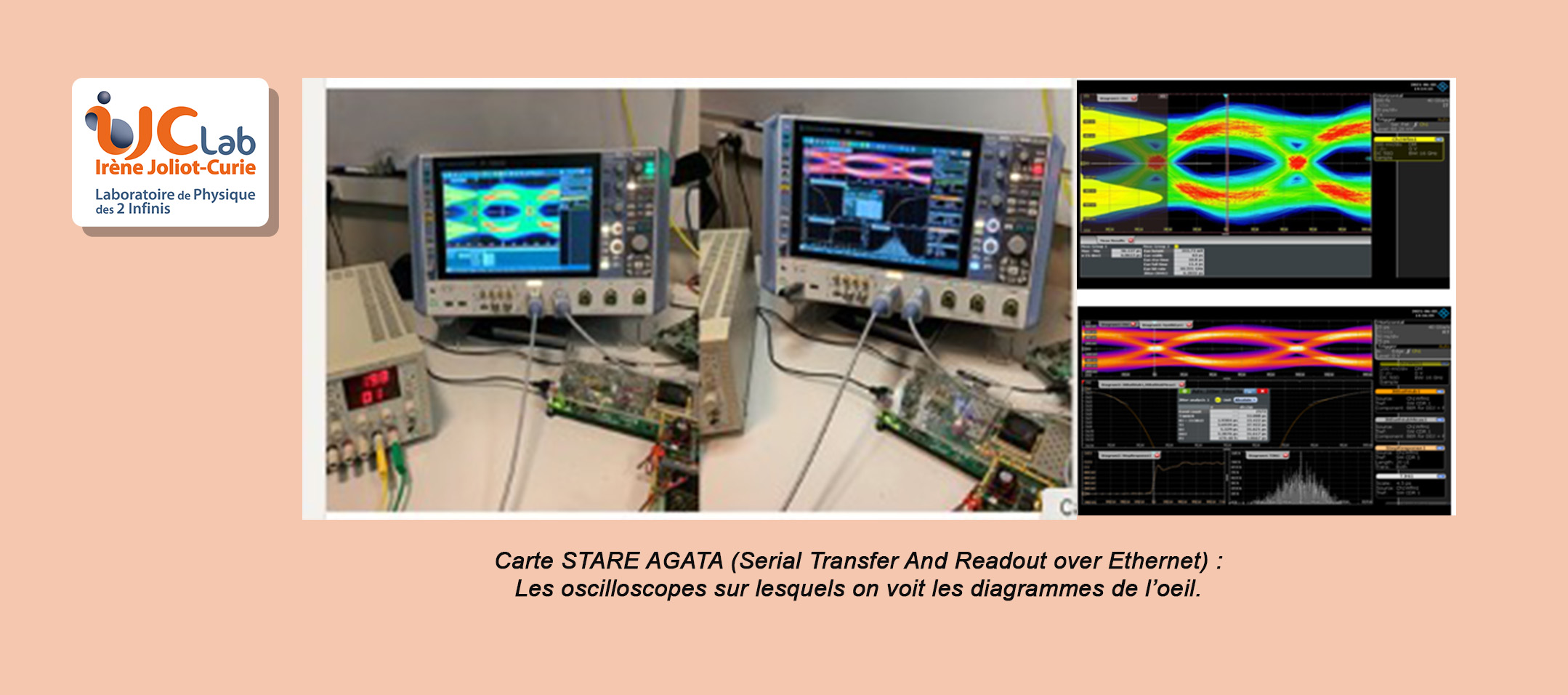
The AGATA (Advanced Gamma Tracking Array) project is a European next-generation gamma-ray spectrometer project, bringing together researchers from 13 countries and intended for nuclear structure studies. Its commissioning took place in 2010 and it is currently taking data in Italy at the Legnaro National Laboratory (LNL) accelerator. The STARE card (Serial Transfer And Readout over Ethernet) manages the transfer of data from the detector to computer farms: as part of the AGATA project, for 3 weeks, 40 Gbps are thus transferred from each of the 180 cards to 180 servers, or 9,072 TB of data, according to the ethernet data transfer protocol UDP (User Datagram Protocol) and RUDP (Reliable UDP).
In order to ensure the performance of the STARE card, it was essential to validate the 4 transfer links at 10 Gbps integrated in the STARE card: it is a complex achievement because all the operations and measurements must be carried out at the same frequency input and output to ensure data transfer at 40 Gbps. To do this, members of the Analog and Microelectronics Developments (L. Gibelin, N. Karkour) and Digital Systems and Acquisition (C. Esnault, X. Lafay and D. Linget) services of the Electronics Departmant collaborated with Rhode & Schwarz.
A high performance oscilloscope was used to validate the integrity of the signal by the eye diagram which calculates the statistics of the jitter measurements, check the absence of reflection on the transmission lines and the Bit Error Rate. These tests made it possible to validate the routing of the STARE card, which makes it possible to move on to the production of this card for the needs of AGATA.
To find out more about the AGATA project, the STARE card and the collaboration with Rhode&Schwarz.























